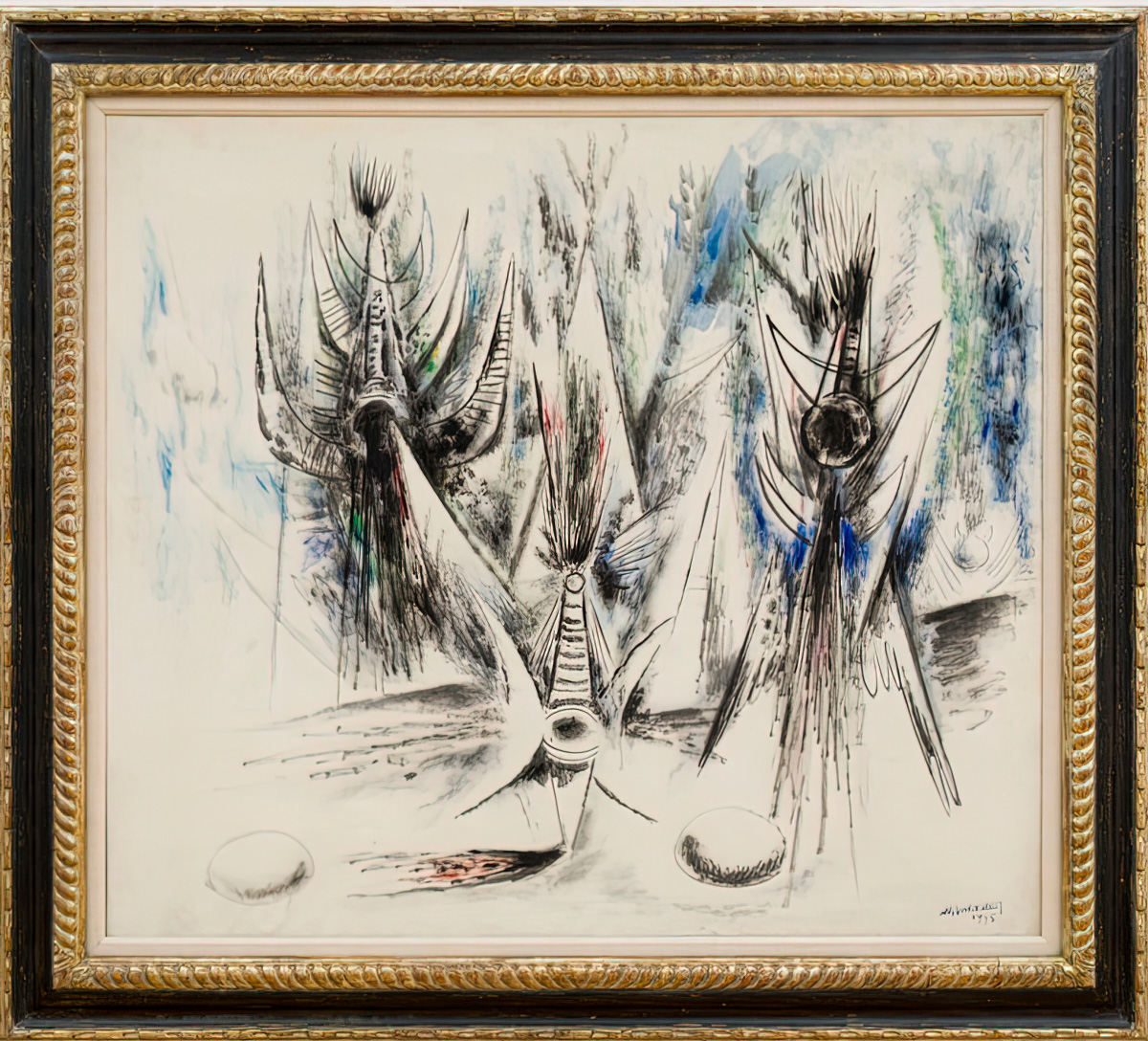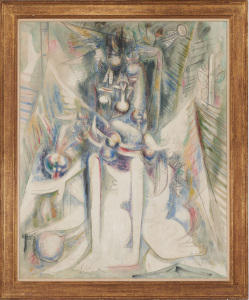ART CITIES:N.York-Wifredo Lam
 Born in Cuba to a Chinese father and Congolese-Iberian mother, Wifredo Lam is widely considered one of the greatest artists of the 20th century. Having trained in Spain and France in the early years of his career, the artist became lifelong friends and associates with major figures of the European avant-garde, including Pablo Picasso, Henri Matisse, and Georges Braque. His work was in dialogue with key surrealist and cubist artists and, over the course of his life, Lam transformed modernist painting through his unique cross-cultural hybridization of art.
Born in Cuba to a Chinese father and Congolese-Iberian mother, Wifredo Lam is widely considered one of the greatest artists of the 20th century. Having trained in Spain and France in the early years of his career, the artist became lifelong friends and associates with major figures of the European avant-garde, including Pablo Picasso, Henri Matisse, and Georges Braque. His work was in dialogue with key surrealist and cubist artists and, over the course of his life, Lam transformed modernist painting through his unique cross-cultural hybridization of art.
By Efi Michalarou
Photo: Pace Gallery Archive

Wifredo Lam, who early in his career associated with major European figures in the surrealist and cubist movements, invented a radically syncretic visual language that challenged the Eurocentricity of Modernism. The exhibition “Wifredo Lam: The Imagination at Work” includes paintings, works on paper, and rarely seen bronze sculptures, including a significant loan from the Santa Barbara Museum of Art. The exhibition begins with the artist’s paintings from the late 1930s, when he converged with avant-garde artists and intellectuals in Europe. It was during this period that Lam encountered Picasso’s collection of African masks, which would come to influence his later work. Returning to Havana in the early 1940s, Lam was struck by the racism and exploitation that characterized Cuban society under the US-backed dictatorship of Fulgencio Batista. In response to these conditions and inspired by the Négritude* movement’s celebration of Blackness, Lam cultivated a practice that decolonized modernist art. Deeply informed by African sculpture and the Afro-Caribbean diaspora, his work during the 1940s developed an iconography referencing Santería, an Afro-Cuban religion. He would eventually view his practice as “an act of decolonization not in a physical sense, but in a mental one”. The exhibition features a group of paintings created between 1947 and 1950, a period following Lam’s first visit to Haiti in 1946. These works, which are characterized by their somber, muted palette, were informed by the Vodou ceremonies that the artist encountered in Haiti at a time of political unrest. Also on view in the presentation are Lam’s paintings from the 1950s and 1960s, during which time the artist relocated to France and traveled frequently to Cuba, Venezuela, and Mexico. Works such as “Untitled” (1957) and “La Veille” (1959) exemplify the artist’s gradual attenuation of Santería symbols—a consequence of his distance from Cuba but also of his gradual, post-war disassociation from Surrealism. In the 1970s, Lam increasingly favored abstraction, geometry, and fragmentation in his paintings. “Personnage” (1970) typifies his late career interest in angular, machinic beings that spoke to the Space Age and feelings of alienation. Among the exhibition’s highlights is a selection of rarely seen bronze sculptures that Lam created in Albissola Marina, Italy in the late 1970s. Stemming from the artist’s experimentation with ceramics in the early 1950s, these highly textured statuettes reflect his paintings’ Santería-inspired iconography and reveal the dialogue between Lam’s sculptural practice and paintings, which were often exhibited next to African and Oceanic sculptures.
* Négritude was an anti-colonial cultural and political movement founded by a group of African and Caribbean students in Paris in the 1930s who sought to reclaim the value of blackness and African culture. Négritude was lead by the Martinican poet Aimé Césaire, French Guianese poet Léon Damas and the future Senegalese President (who was also a poet) Léopold Sédar Senghor. It was influenced by a range of styles and art movements including surrealism and the Harlem Renaissance. With the outbreak of the Second World War and the dispersal of its artists and intellectuals from Paris, Négritude became a global art movement.
Photo: Wifredo Lam, Les Oiseaux Voilés, 1945, oil on canvas, 43-5/8″ × 49-1/2″ (110.8 cm × 125.7 cm), © 2021 Artists Rights Society (ARS), New York / ADAGP, Paris
Info: Curator: Andria Hickey andDr. Michaëla Mohrmann, Pace Gallery, 510 West 25th Street, New York, NY, USA, Duration: 10/11-21/12/2021, Days & Hours: Tue-Sat 10:00-18:00, www.pacegallery.com

Right: Wifredo Lam, Sans titre, 1972, oil on canvas, 17-3/4″ × 13-3/4″ (45.1 cm × 34.9 cm) , © 2021 Artists Rights Society (ARS), New York / ADAGP, Paris

